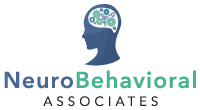January ushers in not only the new year, but the heart of winter. While this change in seasons is enjoyable for many, the lack of sunlight and on-set of cooler temperatures causes others to experience serious emotional distress, a condition known as seasonal affective disorder. This may be particularly true for those with attention-deficit disorders.
Seasonal affective disorder (SAD), often called winter blues, is a kind of depression that tends to pick up in the fall and end at the beginning of spring. SAD does occasionally occur during the summer months and end as fall picks up, but this is much more rare. Symptoms of seasonal affective disorder may include:
- changes in your sleeping or eating patterns
- problems with concentration
- mood problems, such as unstable emotions, anxiety, or feeling irritable
- fatigue
While the exact cause of seasonal affective disorder is not yet entirely understood, it is generally believed that the lack of sunlight in winter may trigger changes in the body, including upsetting the body’s internal clock (circadian rhythm), and unbalancing hormones and neurotransmitters, such as serotonin and melatonin.
Individuals with ADHD are often more sensitive to season changes. Research1 has shown a correlation between attention-deficit disorders and SAD. Studies have also shown an increased risk of SAD in women and girls2, particularly in the teen years. However, both children and adults with or without an attention-deficit disorder can be affected by the depression associated with SAD, and its signs are important to monitor and treat. To decrease the effects of seasonal affective disorder:
Increase Your Exposure to Sunlight as Much as Possible
Open the blinds in the morning as your child gets ready for school, and bundle them up for afternoon walks. Try to experience as much sunlight as possible during the day.
Help Your Child to Label His or Her Feelings
Talking is powerful, and your child may find it relieving to express feelings out loud. For example, you might begin by saying to your child, “I’ve noticed you seem sad today. Not getting as much sun in the winter can sometimes make people feel down.” This may open a dialogue between you and your child that can ease symptoms, and help you, as a parent, determine your child’s needs.
Reach Out for Support
Any type of depression requires support. Be willing to provide your child with extra homework help, or have discussions with teachers, if necessary, to help your child get through the winter months. As an adult, reach out to understanding friends and family who can offer a listening ear.
Maintain Healthy Habits
Try to maintain healthy habits year-round. Healthy eating, appropriate amounts of sleep, and regular exercise may not cure SAD, but it does positively affect you and your child’s moods. For adults, remember that alcohol consumption can often increase symptoms, such as anxiety, so strive to avoid these substances.
Contact a Specialist
Sometimes, the symptoms of seasonal affective disorder, as well as its impact on individuals with co-existing conditions, such as attention-deficit disorders, requires more intensive treatment. As with any depression, don’t hesitate to seek out a qualified professional. Neurobehavioral Associates offers and maintains contact with a network of professionals, and offers comprehensive assessments and services that exist to aide you or your child not only during these tough winter months, but year-round.
—
1. Seasonal Affective Disorder (SAD) – Mayo Clinic
2. Seasonal affective symptoms in adults with residual attention-deficit hyperactivity disorder –
Department of Psychiatry, University of Toronto, Ontario, Canada.
3. Seasonal affective disorder in college students: prevalence and latitude –
Department of Psychology, Bates College, Lewiston, Maine, USA.






